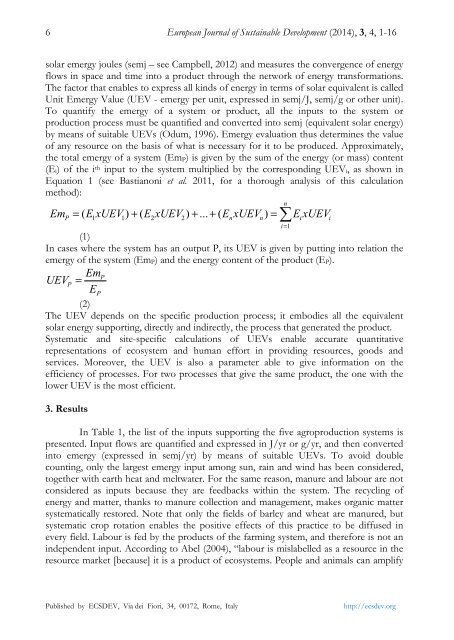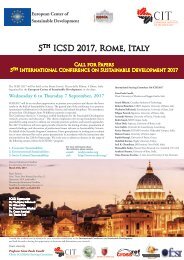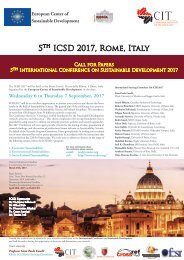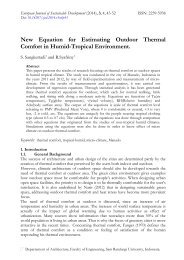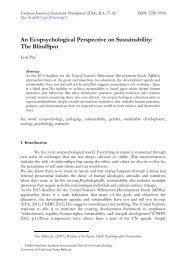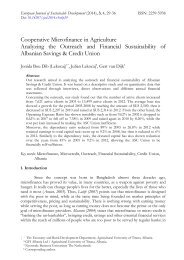Emergy evaluation of a traditional farming system. Case study: Leh District (Ladakh - Indian Trans-Himalaya)
Ladakh traditional farming system has been included on the F.A.O. list of possible “Globally Important Agricultural Heritage Systems”, worthy of being preserved and conserved. The paper describes and assesses cultivation practices in a typical familymanaged farm, located in central Ladakh, analysing how natural resources are exploited, conserved and recycled. Emergy evaluation, an environmental accounting methodology, has been applied to evaluate and compare five staple crop productions: barley, wheat, pea, mustard, and fodder alfalfa. Unit Emergy Values of products (UEV, emergy per unit product, a measure of the environmental production cost) are calculated, taking into account the inputs to production such as water from glaciers, soil fertility, human and animal labour, and more. Results show that the traditional agricultural practices in Ladakh, completely supported by renewable flows, are efficient in the use of local resources. In fact, the UEVs of agroproducts are similar to those of analogous products of conventional agriculture (e.g. 5.27E+05 and 6.64E+05 semj/J for barley and wheat in Ladakh, respectively; 7.37E+05 semj/J for corn in USA), though the inputs of Ladakh agriculture are strongly limited in type and quantity. At the same time, local farmers can create, maintain and rebuild soil functions whose UEV is 1.62E+07 semj/J. Keywords: Ladakh, agrosystem, emergy, environment, sustainability
Ladakh traditional farming system has been included on the F.A.O. list of possible “Globally Important Agricultural Heritage Systems”, worthy of being preserved and
conserved. The paper describes and assesses cultivation practices in a typical familymanaged farm, located in central Ladakh, analysing how natural resources are exploited, conserved and recycled. Emergy evaluation, an environmental accounting methodology, has been applied to evaluate and compare five staple crop productions: barley, wheat, pea, mustard, and fodder alfalfa. Unit Emergy Values of products (UEV, emergy per unit product, a measure of the environmental production cost) are calculated, taking into account the inputs to production such as water from glaciers, soil fertility, human and
animal labour, and more. Results show that the traditional agricultural practices in Ladakh,
completely supported by renewable flows, are efficient in the use of local resources. In fact, the UEVs of agroproducts are similar to those of analogous products of conventional agriculture (e.g. 5.27E+05 and 6.64E+05 semj/J for barley and wheat in Ladakh, respectively; 7.37E+05 semj/J for corn in USA), though the inputs of Ladakh agriculture are strongly limited in type and quantity. At the same time, local farmers can create, maintain and rebuild soil functions whose UEV is 1.62E+07 semj/J.
Keywords: Ladakh, agrosystem, emergy, environment, sustainability
You also want an ePaper? Increase the reach of your titles
YUMPU automatically turns print PDFs into web optimized ePapers that Google loves.
6 European Journal <strong>of</strong> Sustainable Development (2014), 3, 4, 1-16<br />
solar emergy joules (semj – see Campbell, 2012) and measures the convergence <strong>of</strong> energy<br />
flows in space and time into a product through the network <strong>of</strong> energy transformations.<br />
The factor that enables to express all kinds <strong>of</strong> energy in terms <strong>of</strong> solar equivalent is called<br />
Unit <strong>Emergy</strong> Value (UEV - emergy per unit, expressed in semj/J, semj/g or other unit).<br />
To quantify the emergy <strong>of</strong> a <strong>system</strong> or product, all the inputs to the <strong>system</strong> or<br />
production process must be quantified and converted into semj (equivalent solar energy)<br />
by means <strong>of</strong> suitable UEVs (Odum, 1996). <strong>Emergy</strong> <strong>evaluation</strong> thus determines the value<br />
<strong>of</strong> any resource on the basis <strong>of</strong> what is necessary for it to be produced. Approximately,<br />
the total emergy <strong>of</strong> a <strong>system</strong> (Em P ) is given by the sum <strong>of</strong> the energy (or mass) content<br />
(E i ) <strong>of</strong> the i th input to the <strong>system</strong> multiplied by the corresponding UEV i , as shown in<br />
Equation 1 (see Bastianoni et al. 2011, for a thorough analysis <strong>of</strong> this calculation<br />
method):<br />
Em<br />
P<br />
= ( E1 xUEV1<br />
) + ( E2xUEV2<br />
) + ... + ( E xUEV ) =<br />
n<br />
n<br />
n<br />
∑<br />
i=<br />
1<br />
E xUEV<br />
(1)<br />
In cases where the <strong>system</strong> has an output P, its UEV is given by putting into relation the<br />
emergy <strong>of</strong> the <strong>system</strong> (Em P ) and the energy content <strong>of</strong> the product (E P ).<br />
EmP<br />
UEV<br />
P<br />
=<br />
EP<br />
(2)<br />
The UEV depends on the specific production process; it embodies all the equivalent<br />
solar energy supporting, directly and indirectly, the process that generated the product.<br />
Systematic and site-specific calculations <strong>of</strong> UEVs enable accurate quantitative<br />
representations <strong>of</strong> eco<strong>system</strong> and human effort in providing resources, goods and<br />
services. Moreover, the UEV is also a parameter able to give information on the<br />
efficiency <strong>of</strong> processes. For two processes that give the same product, the one with the<br />
lower UEV is the most efficient.<br />
3. Results<br />
In Table 1, the list <strong>of</strong> the inputs supporting the five agroproduction <strong>system</strong>s is<br />
presented. Input flows are quantified and expressed in J/yr or g/yr, and then converted<br />
into emergy (expressed in semj/yr) by means <strong>of</strong> suitable UEVs. To avoid double<br />
counting, only the largest emergy input among sun, rain and wind has been considered,<br />
together with earth heat and meltwater. For the same reason, manure and labour are not<br />
considered as inputs because they are feedbacks within the <strong>system</strong>. The recycling <strong>of</strong><br />
energy and matter, thanks to manure collection and management, makes organic matter<br />
<strong>system</strong>atically restored. Note that only the fields <strong>of</strong> barley and wheat are manured, but<br />
<strong>system</strong>atic crop rotation enables the positive effects <strong>of</strong> this practice to be diffused in<br />
every field. Labour is fed by the products <strong>of</strong> the <strong>farming</strong> <strong>system</strong>, and therefore is not an<br />
independent input. According to Abel (2004), “labour is mislabelled as a resource in the<br />
resource market [because] it is a product <strong>of</strong> eco<strong>system</strong>s. People and animals can amplify<br />
i<br />
i<br />
Published by ECSDEV, Via dei Fiori, 34, 00172, Rome, Italy<br />
http://ecsdev.org


